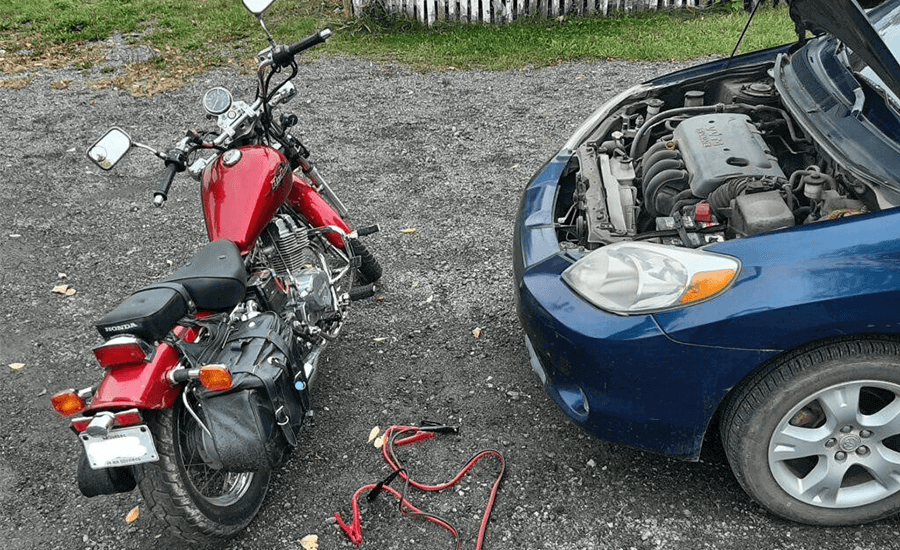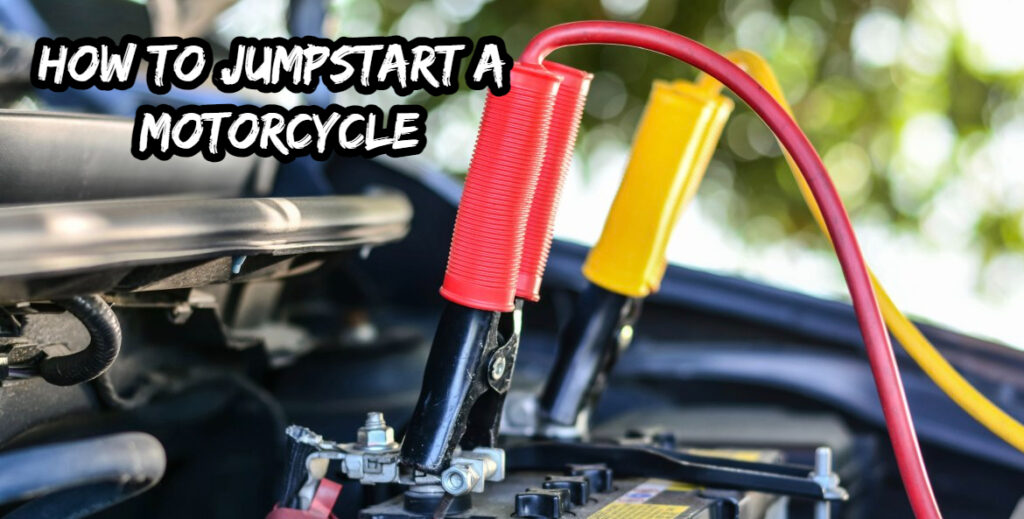Alright, gearheads, let’s talk about something every motorcycle enthusiast needs to know – jumpstarting your trusty steed. Picture this: you’re all set for a thrilling ride, but your motorcycle decides to play dead. Don’t fret; we’ve got your back. We’ll walk you through breathing life back into your bike. So, let’s get those engines purring again.
Checking the Basics
Before jumping into jumpstarting, let’s ensure we’ve covered our basics. Here are a few things to check:
- Fuel in the Tank: It might sound obvious, but sometimes, we forget the simplest things. Make sure you’ve got enough gas to get the party started.
- Kill Switch: Ensure the switch is in the “off” position. It’s an easy one to overlook.
- Petcock Position: Check that your petcock is in the right position for older carbureted bikes.
- Spark Plugs: Take a peek at your spark plugs. Clean off any carbon buildup, check the gaps, and replace them if needed.
- Bike in Neutral/Clutch Pulled In: Some bikes have a safety mechanism that prevents them from starting when in gear. Ensure you’re in neutral or have the clutch pulled in.
- Kickstand Up: Another safety feature to remember. Make sure that the kickstand is up.

Can I Jumpstart a Motorcycle With a Dead Battery?
Before we dive into the jumpstarting process, let’s determine if your battery is the culprit. Here’s how to do it:
Check Your Lights: If your battery is on the fritz, your headlights and instrument panel backlight will likely be dimmer than usual or might not work.
Check Battery Voltage: Grab a voltmeter or multimeter and switch it to DC mode. Test the voltage by connecting the leads to the battery’s positive and negative terminals. A full 12-V battery should read 12.66 V, and 75% charge is about 12.45 V. Anything below this might not be enough to kickstart your motorcycle, especially if it’s a modern, fuel-injected beast.
If you’ve determined your battery is undercharged but not entirely dead, it’s time to jumpstart it.
Four Ways to Jumpstart Your Motorcycle
There are four methods to breathe life into your bike, and we’ve got you covered on all fronts:
1. Using Another Motorcycle
If you’ve ever jumpstarted a car, this process will feel familiar. Here’s the rundown:
- Ensure both bikes are off and in neutral.
- Find the battery terminals. Depending on your bike’s make and model, this might be tricky.
- Connect the jumper cables in this order: positive (red) to the dead battery’s positive terminal, positive to the live battery’s positive terminal, negative (black) to the live battery’s negative terminal, and finally, negative to a bare metal surface on the dead bike.
- Start the working bike and let it run for a few minutes.
- Try to start your bike. It might take a few tries.
- Once your bike roars to life, keep both bikes running to recharge your battery.
- Disconnect the jumper cables in reverse order.
2. Using a Car Battery
Using a car battery is a last resort; you should only do it if no other option is available. It’s a bit risky due to the difference in amperage between car and motorcycle batteries, but in a pinch, here’s how to do it:
- Ensure both your bike and the car are off.
- Connect the jumper cables in the same way as with another motorcycle but be extra cautious.
- Try starting your motorcycle while keeping the car off. Cranking your bike won’t drain the car battery, but running the car might damage your bike’s electrical system.
- If successful, disconnect the jumper cables in reverse order.
3. Using a Portable Jump Starter
A portable jump starter is your trusty sidekick in times of need. Here’s how to use it:
- Start with both your motorcycle and the jump starter off.
- Connect the attached cables just like with traditional jumper cables.
- Turn on the jump starter, ensuring it’s set to the correct voltage for your battery.
- Try starting your motorcycle, cranking for no more than 2-3 seconds at a time.
- Disconnect the jumper cables in reverse order.
- Recharge the jump starter after each use.
4. Push Starting
Push starting, or bump starting, is a skill every rider should have in their arsenal. It’s a bit of a workout, but it can save the day:
- Find a clear stretch of road.
- Put your motorcycle in 2nd gear, or start in neutral.
- Pull the clutch and start pushing your bike until you reach a speed of at least 5 mph.
- Release the clutch quickly while giving it some gas. If it doesn’t start immediately, give it a few seconds and try again.
- Once your motorcycle roars to life, you’re good to go.
There you have it, fellow riders. With these jumpstarting techniques in your toolkit, you’ll never be stranded with a dead battery again. Now, go hit the open road and enjoy the ride!
